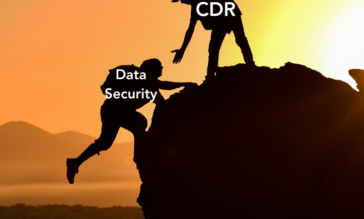Zero-Day Threat Protection: Staying Ahead of the Game

Zero-day malware presents a huge cybersecurity challenge for organizations. These threats often go undiscovered, as they – target weaknesses that developers haven’t yet found. So, by nature, zero-day threats don’t have a signature. They are known as ‘unknown’ threats, which means they won’t be found in any existing database, rendering traditional, detection-based security solutions powerless to stop them. A zero-day attack will easily evade detection and rapidly breach an organization, leaving a trail of destruction behind it. That is, unless another solution is used that will prevent the malware from getting to the organization at all.
Let’s break down what zero-day threat protection entails, how an attack can breach your network, and what you can do to prevent them.
The Heightened Need for Zero-Day Threat Protection
First, let’s look at the term ‘zero-day’. This term implies that the threat exists on the ‘zeroth day’, AKA – the day before the ‘first day’. In other words, the day before the vulnerability becomes known. While hackers often exploit existing, known vulnerabilities – zero-day threats are different. They are the products of hackers looking to exploit “security holes”, which are system vulnerabilities that have not yet been discovered at all. If a system is compromised, and up-to-date security detection software doesn’t recognize it, it’s considered a zero-day attack.
When a new security vulnerability is discovered, usually by a security expert, they will notify the software vendor. Then the ball is in the vendor’s court and it’s their job to create a patch that will fix it. Sometimes, however, hackers – who are often just as skilled as security experts – will be the first to discover a vulnerability. With their own ulterior motives, at heart they’ll set to work on this ‘opportunity’, creating zero-day malware to exploit the weakness. This method has created a new, effective way of breaching organizations. And unfortunately, hackers don’t even need to look for vulnerabilities these days – zero-day knowledge can be bought on the dark web, albeit for a hefty price. Now, with such high stakes, zero-day threat protection has become an absolute imperative.
How Zero-Day Threats Find Their Way In
Zero-day threats have a specific lifetime: from the moment of their development until the vulnerability is fixed, whether through a security patch or when a signature becomes available. After that, their zero-day days are over – and they become ‘known threats’ that can be detected. The time period in which the vulnerability still exists is known as the ‘window of vulnerability’ and can last anything from a few days to a few years, during which the malware will remain unknown.
Zero-day threats have a few different attack vectors through which they breach organizations. They can exist as a script running on a browser, from a compromised website, or as malicious code injected into database queries. For example, Microsoft DDE – Dynamic Data Exchange is a feature built into all Microsoft Office products, designed to allow Word to use data from other Office applications. This feature can be exploited to run malicious code when an Office file is opened, even if macros are disabled.
However, most zero-day attacks come from infected files. Often, hackers will use common, frequently shared file types to compromise systems and steal data. These files can be sent through email attachments, downloaded from the web or a cloud-based application, or shared between devices.
The Benefits of Zero-Day Threat Protection
As zero-day threats become more sophisticated and cybercriminals continue to exploit vulnerabilities, your organization simply can’t afford to rely on a detection-based solution alone. That’s where zero-day threat protection comes in. Your organization must implement a plan that is proactive, or else you may fall victim to the damaging and costly aftershock of a zero-day attack.
When you implement zero-day threat protection, your organization will be able to rest easy knowing you won’t be left scrambling to pick up the pieces. Plus, more complex threats call for new, stronger security measures. When you integrate a security solution that focuses on protection rather than detection, you can allocate valuable time and resources to training your employees, enhancing productivity, boosting collaboration, and more.
How Votiro Can Support Your Zero-Day Threat Protection Strategy
At Votiro, we know you don’t have time to wait around for a detection-based solution to pick up on a zero-day threat. With our Votiro solution, our proprietary Positive Selection® technology sanitizes every file before it ever hits your inbox. This way, your organization can stay safe and secure without an attack disrupting anyone’s productivity flow.
Ready to learn more? Schedule a demo with us today to see our solution in action. Or, feel free to contact us today to speak with a member of our team.
News you can use
Stay up-to-date on the latest industry news and get all the insights you need to navigate the cybersecurity world like a pro. It's as easy as using that form to the right. No catch. Just click, fill, subscribe, and sit back as the information comes to you.
Sign-up Here!
Subscribe to our newsletter for real-time insights about the cybersecurity industry.



